|
Lead Liaison Debuts New B2B Event Tool http://bit.ly/2Tk8Fxj  Lead Liaison has introduced a new lead management tool for event marketers: GoExhibit! The service, a new iteration of its GoCapture! app, allows users to use brand colors, logo and content that includes explainer videos and maps, the company says. The capability presumably can drive targeted emails, push notifications and other forms of messaging. In addition, GoExhibit! features a dashboard through which event producers and exhibitors can track events and measure ROI, based on metrics such as cost per lead, revenue generated and post-event engagement. It also includes a custom check-in and registration system. The GoCapture app is compatible with iOS and Android smartphones and tablets, and will soon be extended to Windows, according to Lead Liaison. The GoExhibit! app can be integrated with Salesforce, Microsoft Dynamics an other CRMs, it says. Lead Liaison also offers Revenue Generation Software, a tool that it says facilitates marketing across email, social, web, mobile and offline channels.
advertisement advertisement Mobile Marketing via MediaPost.com: mobile http://bit.ly/2oB2PsH December 31, 2018 at 02:59PM
0 Comments
A New Feature In Google Search Could Give Publishers More Ad Headaches http://bit.ly/2R0OeJe  Google Featured Snippets now can link to the exact content from a query to serve up in search results. It’s only available on content from mobile sites using Accelerated Mobile Pages, an open source initiative to promote faster load times. When the Featured Snippet links to an AMP article, Google will scroll the user down to the answer in the orange highlighted section. It could bring up an interesting dilemma for advertising. It could mean a higher percentage of advertisements on publisher sites get overlooked because Google will scroll the person searching for the content right past the ad and to the content. A snack bar at the bottom of the window also tells users they are “Scrolled to section” and provides a “Go to top” shortcut. The highlight and snack bar automatically disappears after a few seconds, according to one report. For now, Google limited questions that offer an AMP highlight to shorter queries that can be directly answered, such as “What is the advantage of AMP?” or “What is the use of a VPN?” Those direct answers could be used to leverage voice queries on Assistant and Home speakers, but also could cause publishers headaches when the site visitor lands on AMP-supported content. advertisement advertisement Mobile Marketing via MediaPost.com: mobile http://bit.ly/2oB2PsH December 31, 2018 at 02:04PM You Were There: Five Top News Stories Of 2018 http://bit.ly/2SuiM2G  Privacy Malfeasance — From GDPR to the unrolling Facebook scandal, privacy was on the front pages of the national media in 2018. Facebook, no friend to email marketers to begin with, has through its sheer arrogance hastened the passage of GDPR-style regulation in the U.S. at both the state and federal levels. And email marketers — those who follow privacy best practices — are being slimed through no fault of their own. Not that the email industry is totally innocent: some providers still scan emails to peddle targeted advertising. Google got the message and stopped. Verizon, with its unraveling Oath unit, hasn’t. Security Meltdown — This is a related problem. The focus has been on whether the Russians have infiltrated our political campaigns. Let’s not forget a parallel development: that corporate America is one big sieve: Facebook, Marriott, Macy’s, Quora and others suffered staggering data breaches this year, and they have only themselves to blame. Some failed to conduct due diligence about security when hiring vendors or acquiring other companies. Others didn’t train their staffs. advertisement advertisement Worse, some violated the old PR saying: “When you’re in a hole, stop digging,” by failing to report these hacks in a timely way. One shudders at the looming financial liability they face from fines and/or class action litigation. Yet it’s possible that consumers don’t care — they are suffering from breach fatigue. Martech Miracles — Finally, a positive story: Email, that tired old workhorse, has improved its game. Machine learning now allows brands to send both promotional and transactional email on an individual basis without manual intervention. And they can operate via the cloud, or through hybrid solutions. Is everyone there yet? No. But the tools exist. Here’s another advance: consumers can respond directly through the email, not by going to a website link But there are challenges, like the Gmail redesign and the need to create mobile-friendly emails. At the same time, customer service technology has reached a new level. Forbes reports this morning that TUMI, the luggage maker, routes phone calls to the last customer service person the customer has spoken with, to build empathy. Vendor Monster Mash — From Twilio’s $2 billion acquisition of SendGrid to Adobe’s takeover of Marketo for $4.75 billion, there were some big deals cut in 2019. And there were a number of lesser ones, like Upland Software’s purchase of Adestra and Rebel’s pickup by Salesforce. Enterprise players have used these mergers to broaden their offerings by adding cloud components, email APIs and attribution tools. Is this good for the clients? Hardly — there is less choice. The BIMI Prompt — Forgive us a bit of hype, but here’s one of the most hopeful stories of 2018: Brand Indicators or Message Identification (BIMI). Developed by a consortium of high-tech players, BIMI allows brands to place their logos in subject lines if they have been validated as secure and legitimate. The very presence of the logo assures that the recipient that the message is from a trusted brand. Granted, both brand and consumers will have to be educated. Expect a series of high-profile announcements in 2019 as BIMI is rolled out and companies go public with their involvement.
Mobile Marketing via MediaPost.com: mobile http://bit.ly/2oB2PsH December 31, 2018 at 12:47PM Mobile Alerts Considered Standalone Platform In Newsrooms http://bit.ly/2AyimS3  Following a 2017 report in collaboration with the Guardian Mobile Innovation Lab, which examined how newsrooms use mobile push alerts, the Tow Center for Digital Journalism has revisited the subject to see how strategy may have changed. In June, Tow began to collect more data from 30 news outlets. The results showed a change in how newsrooms are approaching alerts. They are now considered to be their own platform. Offering both quantitative analysis and case studies, the report, “Pushed Even Furthers: U.S. Newsrooms View Mobile Alerts as a Standalone Platform,” provided some surprising insights. Among the newsrooms that took part, the weekly average of push alerts sent to subscribers jumped by 16%, from 22.4 per app per week in 2017, to 26 per all per week in 2018. In addition to increasing the number of alerts, newsrooms also increased the length of alerts by over 30%. advertisement advertisement Finding also showed the use of images, emojis and videos in notifications was rare, with seven outlets using emojis in alerts in 2018. Those included Quartz, BuzzFeed, BuzzFeed News and HuffPost. The case study found outlets are shifting from using push notifications for only breaking news and extending them to various categories, such as analysis, general and first-hand accounts. Those categories accounted for more than 25% of all alerts sent out during Trump’s family-separation policy, which was at the forefront of news during the time of the study. Further, the study found national and regional outlets face different but equally important dilemmas when deciding how to send a notification and which part of a story to focus attention. Mobile Marketing via MediaPost.com: mobile http://bit.ly/2oB2PsH December 31, 2018 at 11:37AM Volkswagen Acquires Volvo's Connected Car Unit http://bit.ly/2GMKq9v  The Volkswagen Group is purchasing a majority stake in Volvo’s wholly-owned subsidiary WirelessCar for $123 million. The Volvo Group has signed an agreement to divest 75% of the shares of its subsidiary, with the closing of the deal expected during the first half of 2019, according to Volvo. “We are committed to remaining the leader within the field of connectivity and connected services,” stated Jan Gurander, deputy CEO of the Volvo Group. “This agreement will enable us to fully focus our resources and efforts on connected solutions for commercial vehicles.” WirelessCar, founded in 1999, has more than 3 million active connected cars globally and is based in Sweden with offices in the U.S. and China. The connected car company has its own technology platform and develops digital services including billing services like tolls, remote diagnostics and breakdown services. The Volkswagen Group is using WirelessCar’s connectivity technology in the development of the digital ecosystem that VW is working on with technology partners with the intent of providing full connectivity in future vehicles. advertisement advertisement “Our aim is to develop the Volkswagen into a mobility provider with a fully-connected fleet,” stated Christoph Hartung, head of digital and new business/mobility services at Volkswagen. “Our customers will be able to use digital value-added services in their cars or on their mobile devices at all times.” Mobile Marketing via MediaPost.com: mobile http://bit.ly/2oB2PsH December 31, 2018 at 10:24AM Tomorrow's Data And Programmatic Metrics http://bit.ly/2rZkWf5  Marketers are ready for new metrics. And as we close out 2018, data scientists, developers and analysts may grant their wish in the new year. First-party data. Third-party data. Privacy issues. Programmatic ad buying and serving. Advertisers have jumped through hoops this year trying to keep up with all the changes, challenges and regulations rolling out worldwide, such as Europe’s General Data Protection Regulations. As we say goodbye to 2018 and hello to 2019, I spent some time speaking with Jason Downie, chief strategy officer at Lotame, to talk about what marketers can expect next year. He built what some call the world’s largest data exchange for advertisers because it supports billions of cookies and device IDs. When Downie began at Lotame in 2010, the company ran an ad network selling about nine audience segments in three channels with about 50,000 cookies. The target was sports audiences. Now, Lotame supports about 5,000 audience segments made from billions of worldwide device IDs and cookies for more than 30 channels. The company built 6 billion profiles worldwide and processes so much data that they use artificial intelligence and machine learning to maintain quality and accuracy in the exchange. Here are excerpts from our conversation. advertisement advertisement Data & Programmatic Insider: Where did the concept of building a data exchange originate? Jason Downie: We started to educate publishers that data could be sold separately in addition to their ad inventory. We had connection with small publishers at the time. In 2011, we christened the Lotame data exchange LDS and had about 50 million 20-day cookies. So we began calling publishers, offering them another revenue that doesn’t cannibalize media sales because it will be anonymous in the exchange. We gave the nine audiences sexy names like fashionista, couch potatoes, and jet-setting travelers. In 2014 we began adding international data … and then mobile data followed. D&PI: What do you see as the biggest challenge through those years? Downie: The challenge has been educating publishers (sellers) and advertisers (buyers) on the benefits of data. It was tough, but rewarding. Now in 2018, everyone knowns about data and they see the value but they’re looking for ways to find quality nuggets and different data stories in the massive amounts of data out there. D&PI: What were some of the industry’s accomplishments and hurdles for 2018? Downie: The hurdles were that there’s do much data and advertisers need to figure out the best and highest quality so marketers can tell their stories and maximize the efficiencies of their budgets. It’s up to data companies and publishers to help them. In 2018, we had the Facebook issue, GDPR took effect in May, and now we have the California privacy law. There are a lot of changes occurring and we need to make sure that consumers give their consent. Then there’s the big story around quality and labeling the data so marketers know where it came from. D&PI: What are your predictions for 2019? Downie: Marketers will continue to get more demanding and educated about their data needs. There will be more consolidation around data supply and continuation of privacy in relation to first- and their-party data. There will be more breakthroughs in terms of how data is used, mobile vs. cookie and in different channels like video and display. There will be changes in measurement and attribution for offline and online. D&PI: What will marketers learn in 2019? Downie: Quality is such a vague word. That story isn’t dead. There’s a lot more to do in defining quality and exploiting the data to accomplish their goal. D&PI: Do you see new metrics? Downie: There’s been different measurement tools for demographic data in the market for several years, but there have been movements to get more accurate metrics around household income, in the presence of children and car ownership. This data doesn’t have direct benchmarks. There are many survey companies that can provide validation for different data segments based on survey responses and data science. There will be a continued push, maybe at the back half of the year, to better understand the accuracy and ethnicity of non-demographic segments to hold data providers accountable for the quality and accuracy of that data. Mobile Marketing via MediaPost.com: mobile http://bit.ly/2oB2PsH December 31, 2018 at 07:28AM
http://bit.ly/2EZh1rg
Our Top 10 Search Marketing Posts of 2018 http://bit.ly/2Qf6GbN
 Search marketing has continued to mature throughout 2018. At each twist and turn along the way, we've done our best to not only cover each change, but also offer insight and research-based strategy to help savvy digital marketers along the way. We’re fortunate to have a fantastic group of digital marketing professionals contributing to the TopRank Marketing Blog, with our CEO Lee Odden, Associate Director of Search & Analytics Tiffani Allen, Vice President of Client Accounts Alexis Hall, Content Strategist Anne Leuman, and others, each contributing search marketing insights, tips, and tricks this past year. To help our blog community grow its search marketing knowledge, we’re happy to offer this list of our most popular search marketing posts of 2018. Search marketing has continued to mature throughout 2018. At each twist and turn along the way, we've done our best to not only cover each change, but also offer insight and research-based strategy to help savvy digital marketers along the way. We’re fortunate to have a fantastic group of digital marketing professionals contributing to the TopRank Marketing Blog, with our CEO Lee Odden, Associate Director of Search & Analytics Tiffani Allen, Vice President of Client Accounts Alexis Hall, Content Strategist Anne Leuman, and others, each contributing search marketing insights, tips, and tricks this past year. To help our blog community grow its search marketing knowledge, we’re happy to offer this list of our most popular search marketing posts of 2018.
Our Most Popular Search Marketing Posts in 2018:1. Google Game Changers: 5 Recent Updates and How They Affect Marketers — Anne Leuman The talented Anne Leuman wrote the most popular search marketing post of 2018 on our blog, taking an important look at how to up your Google game by understanding and utilizing HTTPS warnings and numerous other factors that were being rolled out this year. Anne broke down some the latest and greatest game-changing updates from Google, what they mean for marketers, and how marketers can adapt. Check out all of Anne's posts here. The talented Anne Leuman wrote the most popular search marketing post of 2018 on our blog, taking an important look at how to up your Google game by understanding and utilizing HTTPS warnings and numerous other factors that were being rolled out this year. Anne broke down some the latest and greatest game-changing updates from Google, what they mean for marketers, and how marketers can adapt. Check out all of Anne's posts here.
2. TopRank Marketing’s Top 6 SEO Predictions & Trends for 2019 — Tiffani Allen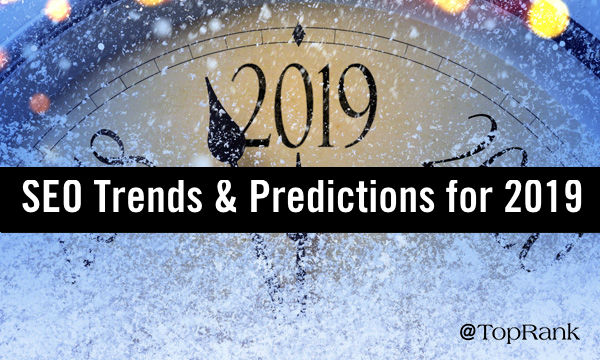 The second most popular search marketing post of the year is by Tiffani Allen, who deftly explores the top SEO predictions and trends marketers should know now and keep an eye on into the new year. Check out all of Tiffani's posts here. The second most popular search marketing post of the year is by Tiffani Allen, who deftly explores the top SEO predictions and trends marketers should know now and keep an eye on into the new year. Check out all of Tiffani's posts here.
3. 5 Powerful Types (And Examples) of Link-Worthy Content — Anne Leuman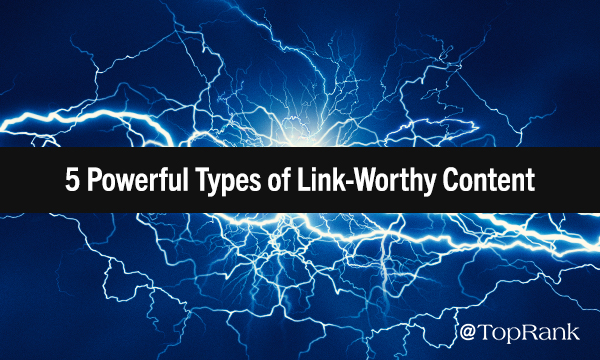 Anne also earned the No. 3 spot on our top search marketing posts of 2018 list, in an excellent post showing how to boost credible referrals, back-links, and organic visibility using five powerful types of link-worthy content. Anne also earned the No. 3 spot on our top search marketing posts of 2018 list, in an excellent post showing how to boost credible referrals, back-links, and organic visibility using five powerful types of link-worthy content.
4. Why Marketers Are Disenchanted with SEO — Anne Leuman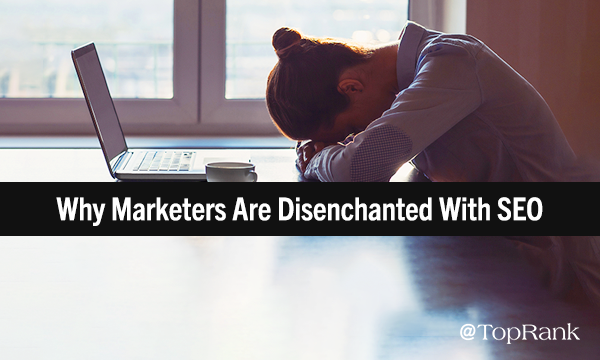 Anne also wrote our fourth most popular search marketing post of 2018, addressing why some marketers are disenchanted with SEO. She explores the modern marketer’s SEO struggles, and shows you why now is not the time to quit. Rather than abandoning a tried-and-true tactic, Anne looks at how to shift your search marketing strategy. Anne also wrote our fourth most popular search marketing post of 2018, addressing why some marketers are disenchanted with SEO. She explores the modern marketer’s SEO struggles, and shows you why now is not the time to quit. Rather than abandoning a tried-and-true tactic, Anne looks at how to shift your search marketing strategy.
5. Redesigning Your Website? Make Sure SEO & Content Have a Seat at Website Migration Table — Alexis Hall Alexis Hall earned spot the No. 5 on our top search marketing posts of the year list, with a helpful look at how SEO and content can combine to create a better website migration strategy. Alexis shows why SEO can’t stand alone, exploring how it needs a content lens to ensure solid performance after the migration switch is flipped. Check out all of Alexis' posts here. Alexis Hall earned spot the No. 5 on our top search marketing posts of the year list, with a helpful look at how SEO and content can combine to create a better website migration strategy. Alexis shows why SEO can’t stand alone, exploring how it needs a content lens to ensure solid performance after the migration switch is flipped. Check out all of Alexis' posts here.
6. Power Pages and Best Answer Content: Should You Go Long or Short Form? — Lee Odden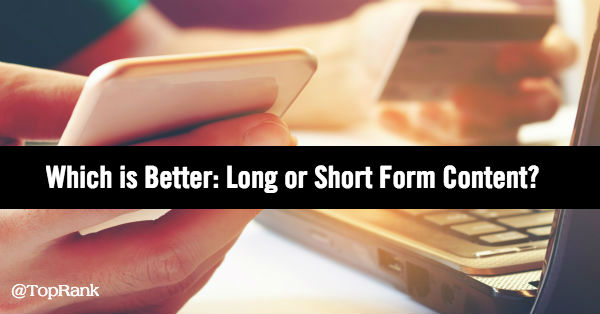 Our CEO penned the sixth most popular search marketing post of 2018, with a detailed look at a perennial question — which is better: long or short-form content? Lee explains how savvy marketers know that while statistical generalizations have their place, they aren't always so useful in practice. He then dives into the intertwining of engagement and reach, and looks at depth-over-length and authority signals. Check out all of Lee's posts here. Our CEO penned the sixth most popular search marketing post of 2018, with a detailed look at a perennial question — which is better: long or short-form content? Lee explains how savvy marketers know that while statistical generalizations have their place, they aren't always so useful in practice. He then dives into the intertwining of engagement and reach, and looks at depth-over-length and authority signals. Check out all of Lee's posts here.
7. The Key to SEO & Content Marketing Success: Understanding Search Intent — Anne Leuman Anne makes another appearance on our best-of-2018 list with another excellent post, showing the key to SEO and content marketing success. She dives into understanding search intent in its four incarnations — informational, navigational, commercial, and transactional — and goes on to offer three steps for building intent into your strategy. Anne makes another appearance on our best-of-2018 list with another excellent post, showing the key to SEO and content marketing success. She dives into understanding search intent in its four incarnations — informational, navigational, commercial, and transactional — and goes on to offer three steps for building intent into your strategy.
8. How to Leverage Influencer Marketing for Improved SEO #Pubcon Florida — Lee Odden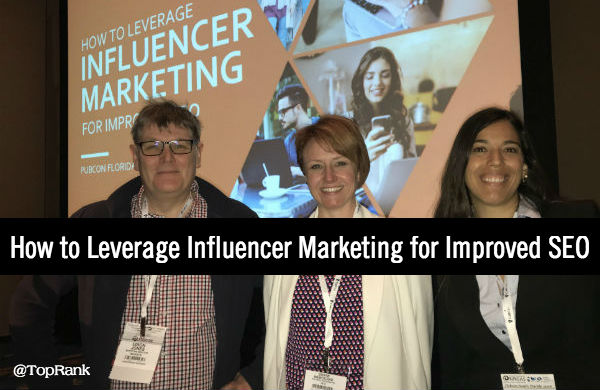 Lee earned another spot on our top search marketing posts of 2018 list, with a take-away-filled live-blog piece from the Pubcon Florida conference. Lee shares an impressive number of insights from a session that featured Marcela De Vivo of SEMrush and Dixon Jones of Majestic, showing some of the best methods for leveraging influencer marketing to improve SEO. Lee earned another spot on our top search marketing posts of 2018 list, with a take-away-filled live-blog piece from the Pubcon Florida conference. Lee shares an impressive number of insights from a session that featured Marcela De Vivo of SEMrush and Dixon Jones of Majestic, showing some of the best methods for leveraging influencer marketing to improve SEO.
9. SEO + Paid Search: An Aristotelian Lesson in Search Marketing Integration — Anne Leuman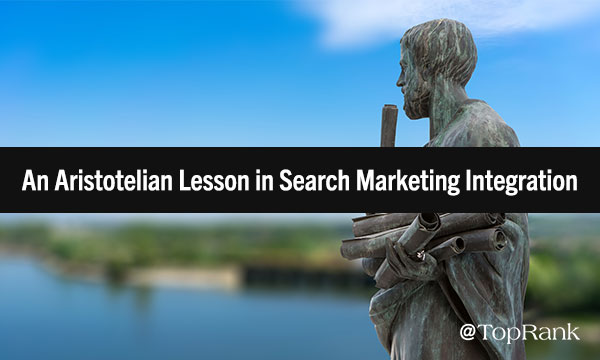 Making an impressive fifth appearance on our search marketing top 10 list, Anne provides us an Aristotelian lesson in how SEO can combine with paid search for powerful search marketing integration. In this helpful post, Anne shows how integration makes the digital marketing world go round and how it can bring balance and harmony to your efforts. Making an impressive fifth appearance on our search marketing top 10 list, Anne provides us an Aristotelian lesson in how SEO can combine with paid search for powerful search marketing integration. In this helpful post, Anne shows how integration makes the digital marketing world go round and how it can bring balance and harmony to your efforts.
10. Relationship Powered Link Building #Pubcon Florida — Lee Odden In Lee's third appearance on our top 10 list, this piece covers a session presented by Ann Smarty of Internet Marketing Ninjas during the Pubcon Florida conference, sharing numerous actionable tips for link-building through relationships. We can't thank Anne, Tiffani, Alexis, and Lee enough for these top 10 search marketing posts of 2018 — congratulations on making the list! In Lee's third appearance on our top 10 list, this piece covers a session presented by Ann Smarty of Internet Marketing Ninjas during the Pubcon Florida conference, sharing numerous actionable tips for link-building through relationships. We can't thank Anne, Tiffani, Alexis, and Lee enough for these top 10 search marketing posts of 2018 — congratulations on making the list!
Thanks TopRank Marketing Writers & ReadersThanks to each of you who read our blog, and to all of you who comment on and share our posts on the TopRank Marketing social media channels. We hope you find continuing benefit from these excellent search marketing posts from 2018. We published dozens of posts this year specifically about search marketing, and plan to bring you even more in 2019, so stay tuned for a new year of the latest helpful research and insight. Please let us know which search marketing topics and ideas you'd like to see us focus on for 2019 — we'd love to hear your suggestions. Feel free to leave those thoughts in the comments section below.The post Our Top 10 Search Marketing Posts of 2018 appeared first on Online Marketing Blog - TopRank®. Mobile Marketing via Hubspot http://bit.ly/2V5eKQ7 December 31, 2018 at 05:31AM Tops in 2018: ESPN Taps AI, Walmart Intros Interactive Toy Lab, L.L. Bean To Track Clothes http://bit.ly/2F0E2Jc  As 2018 winds down, I took a look back to see which aspects of the Internet of Things most interested you during the year. Based on readership of Connected Thinking and stories in the AI & IoT Daily, here are the most viewed stories as a potential benchmark for what may lie ahead in the next year:
What do you expect will be the big AI and IoT development during the next year? Mobile Marketing via MediaPost.com: mobile http://bit.ly/2oB2PsH December 30, 2018 at 08:07PM
http://bit.ly/2GH6x1a
Streaming In The New Year With 'Fortnite' And 'Fuller House' http://bit.ly/2RnWRwO
The New Year’s Eve live special has been a staple of TV for decades. In this era of broadband internet, mobile phones and streaming video, however, many media and tech companies are betting consumers will want to welcome the new year by opening an app on their connected TV or smartphone. Perhaps there is no better example than Amazon’s live-streaming video service Twitch, which will be ringing in 2019 with a 12-hour livestream hosted by “Fortnite” gamer Tyler “Ninja” Blevins. Blevins will set up shop in Times Square, where he will play “Fortnite” alongside surprise guests from 7 p.m. Dec. 31 to 7 a.m. Jan. 1. Streaming juggernaut Netflix, meanwhile, is taking a decidedly different approach, by embracing the on-demand nature of its platform. Continuing a tradition from recent years, Netflix will release 14 New Year’s Eve countdown episodes of some of its original shows, with an eye toward kids and families. Among the shows that can be watched at midnight or earlier: “Boss Baby,” “Fuller House,” “Pinky Malinky,” and "Beat Bugs." advertisement advertisement The company says that over the past few years an average of five million households have tuned in to these on-demand New Year’s specials. For a cord-cutter seeking a more traditional approach, the Times Square ball drop and the live TV feeds will be viewable through streaming over-the-top video services like YouTube TV and Hulu with Live TV. The Times Square Alliance will also be streaming the ball drop live on its website and social channels. On Jan. 1, meanwhile, the digital comedy platform Funny or Die will cover The Rose Parade with hosts Cord Hosenbeck (Will Ferrell) and Tish Cattigan (Molly Shannon). The pair will provide comedic commentary on Funny or Die’s website, and on Twitch. As consumers embrace streaming video, niche alternatives to the popular fare on TV are emerging. Will Ninja’s New Year’s Eve “Fortnite” stream draw more viewers than “New Year’s Rockin’ Eve” on ABC? No, but it may very draw hundreds of thousands, or even millions, of young viewers who wouldn’t be watching broadcast TV anyhow. For programmers and advertisers, the new New Year’s Eve streaming experiments are worth keeping an eye on. Mobile Marketing via MediaPost.com: mobile http://bit.ly/2oB2PsH December 28, 2018 at 01:56PM Mobile Leads Affiliate Revenue, Clicks Rise In Q3 2018 http://bit.ly/2Aja68m  Affiliate marketers did well during the third quarter of 2018, increasing revenue by 35% year-over-year. That data comes from Acceleration Partners, a global affiliate marketing agency. The report analyzed data from more than 13,000 active retailer and affiliate clients' programs from the third quarter of 2017 to the third quarter of 2018 to see how e-commerce and retail brands grew successful affiliate programs. Overall, Independence Day week saw the strongest YoY growth, with revenue up 114%. The report attributes this growth in part to a successful early back-to-school promotion by one retailer in particular. Mobile revenue for the quarter rose 46%, compared with desktops and tablets at 29% YoY. Retailers from the sample group saw revenue from mobile devices rise about two percentage points compared with last year -- 21.4% in 2018 versus 19.4% in 2017. The retailers presented a range of mobile contribution percentages, ranging from less than 1% to more than 50% for some. advertisement advertisement Affiliate program clicks rose 27% in the third quarter of 2018 compared with the year-ago period. Acceleration Partners’ clients took advantage of the various holidays and seasonal time frames by creating excitement and urgency around July 4th sales, back-to-school deals and summer clearance events. Click active partnerships grew 44% YoY, according to recent data, and total commissions paid rose along with revenue and clicks -- up 32% year-over-year. The average commission rate, or commission as a percentage of sales, remained relatively even year-over-year. The average percentage of affiliate program revenue from new customers in rose by 42.2% from 41.9% in the third quarter of 2017. On average, between 38% and 45% of revenue garnered by Acceleration Partners' clients comes from new customers, per the study. Finally, conversion rates for retailers rose about 8.2% in the quarter -- up from 7.9% in the year-ago quarter. Although small, the increase suggests that retailers and their program management teams are effective in continually optimizing their partnerships and messaging, according to the findings. Mobile Marketing via MediaPost.com: mobile http://bit.ly/2oB2PsH December 28, 2018 at 01:35PM |
CategoriesArchives
April 2023
|


 RSS Feed
RSS Feed
